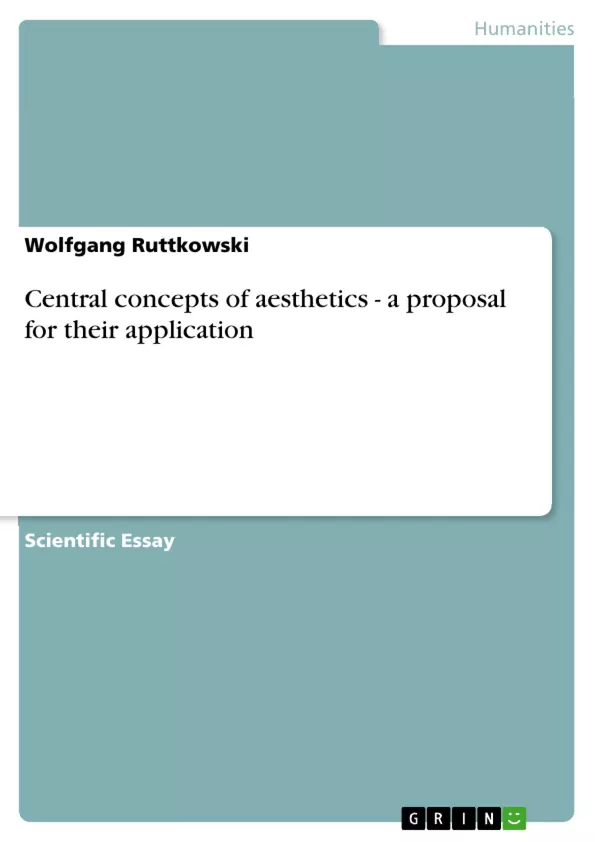I. Prior attempts at sub-dividing aesthetic concepts
II. Some preliminary questions:
1. How do we use the term “Art”?
2. What is the difference between “Art Object” and “Aesthetic Object”?
3. If the “aesthetic” and “artistic” value of an artifact are not the same, what is their relevancy for original works OF of art and their perfect copies?
4. Can Art in spite of its dependency on the “Art World” and on its recipients, contain generally valid meaning?
III. The central concepts “aesthetic - artistic - beautiful”
IV. Intersections of the central concepts
V. The nomenclature of Aesthetic Qualities, Experiences, and Objects
VI. Summary in the form of suggestions
(In: Acta Humanistica, Humanities S. No. 26, March 1999, 203-222)
Table of Contents
- I. Prior Attempts at Sub-Dividing Aesthetic Concepts
- II. Some Preliminary Questions:
- 1. How Do We Use The Term "Art"?
- 2. What Is The Difference Between "Art Object" and "Aesthetic Object"?
- 3. If the “aesthetic\" and \"artistic\" value of an artifact is not the same, what is their relevancy for original works of art and their perfect copies?
- 4. Can Art - In Spite Of Its Dependency On The "Art World" and On Its Recipients - Contain Generally Valid Meaning?
- III. The Central Concepts "aesthetic - artistic - beautiful"
- IV. Intersections Of the Central Concepts
- V. The Nomenclature Of Aesthetic Qualities, Experiences, And Objects
- VI. Summary In The Form Of Suggestions
Objectives and Key Themes
This essay proposes a framework for understanding and applying central concepts in aesthetics, aiming to clarify the relationships between "aesthetic", "artistic", and "beautiful". The work examines historical attempts at categorizing aesthetic concepts and addresses key questions surrounding the definition and application of these terms.
- The distinction between "aesthetic object" and "art object"
- The role of cultural institutions in shaping aesthetic values
- The relationship between artistic authenticity and aesthetic value
- The possibility of universally valid meaning in art
- The distinct meanings and applications of "aesthetic", "artistic", and "beautiful"
Chapter Summaries
- I. Prior Attempts at Sub-Dividing Aesthetic Concepts: This chapter analyzes different approaches to classifying aesthetic concepts, highlighting the contributions of Frank Sibley, Karl Svoboda, and Wolfhart Henckmann.
- II. Some Preliminary Questions: This section poses fundamental questions that are crucial for understanding the relationship between “the Artistic” and “the Aesthetic”. These questions delve into the meaning of "art", the difference between "art object" and "aesthetic object", the relevance of artistic authenticity, and the possibility of objective meaning in art.
- III. The Central Concepts "aesthetic - artistic - beautiful": This chapter examines the distinct meanings and applications of the terms "aesthetic", "artistic", and "beautiful", analyzing their individual scopes and overlaps. It emphasizes the importance of understanding the nuances of each concept and how they relate to each other.
Keywords
This essay focuses on central concepts in aesthetics, including "aesthetic", "artistic", "beautiful", "art object", "aesthetic object", "cultural institutions", "artistic authenticity", "universally valid meaning", and the "art world". These terms are explored within the context of historical and contemporary discussions in aesthetics, aiming to provide a clearer understanding of their significance and interrelationships.
- Quote paper
- Dr. Wolfgang Ruttkowski (Author), 1999, Central concepts of aesthetics - a proposal for their application, Munich, GRIN Verlag, https://www.grin.com/document/7666



